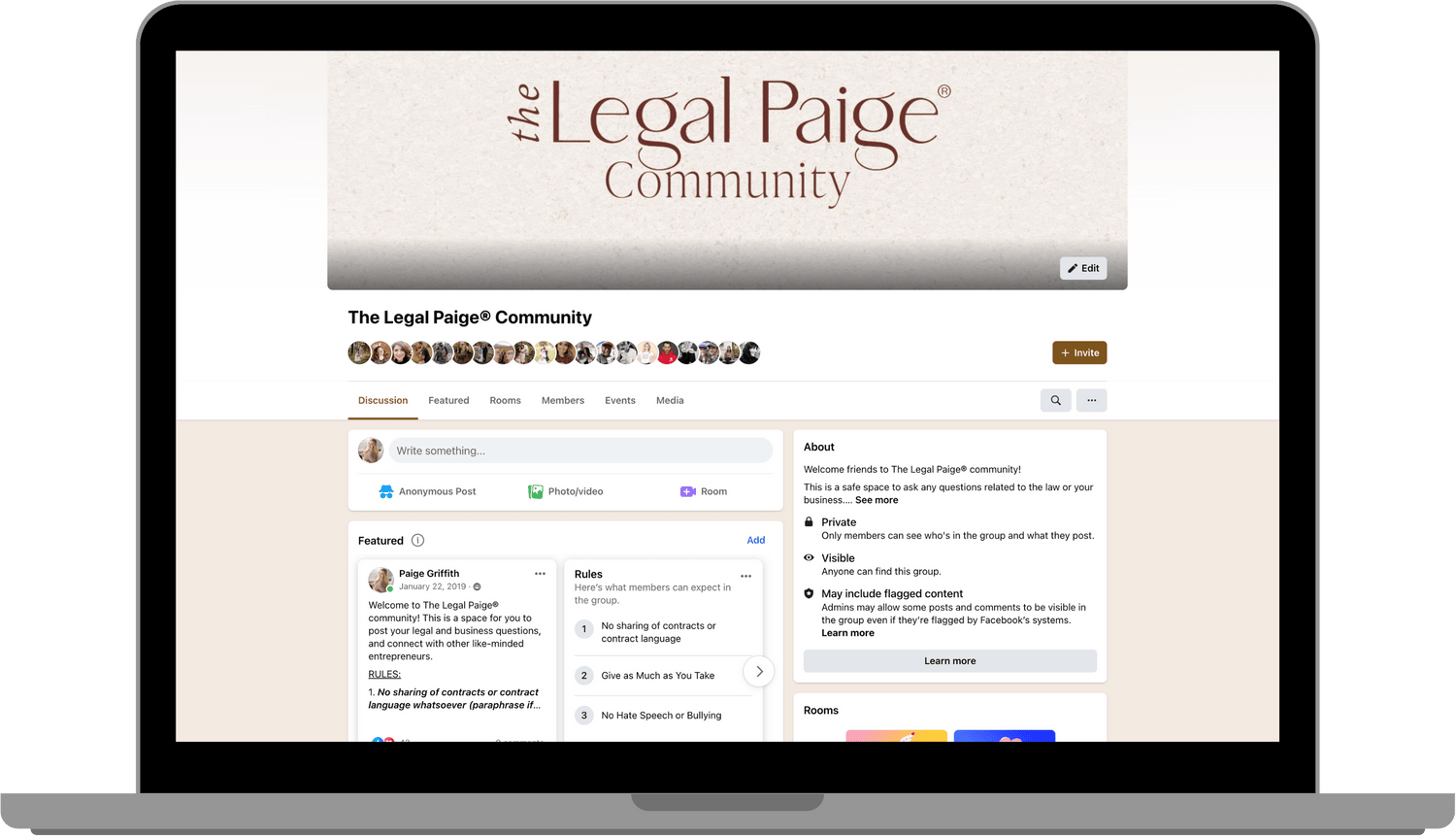
Lessons from Sepia Gate: How to Avoid Scary Photography Client Situations
Sepia Gate is the nickname for a recent, heated debate on social media about a bride and her wedding photographer.
It all started when the bride became (very) unhappy with the edits to her wedding photos. Not the photography itself, mind you—the composition, the posing, the documentary—but the editing style.
The bride specifically disliked the yellow tones of the photos from her wedding day. (Her makeup looked off, her teeth yellowish, and the ocean background appeared white instead of blue, she said.)
After some back-and-forth (and a lot of facts we don’t know about), the bride took to TikTok. She posted dozens of videos criticizing the photographer. In her videos, she refers to the editing style as “Sepia.”
The rants went viral. Pretty soon, everyone was chiming in on behalf of #TeamBride or #TeamPhotographer. The drama became known as Sepia Gate and people started referring to the Sepia Bride and Sepia Photographer
As an attorney who writes contract templates for wedding photographers, I have a LOT to say about this situation. Sepia Gate is honestly the biggest kerfuffle I've seen between a photographer and client.

If we haven’t met, I'm Paige Griffith, an attorney for small business owners and founder of The Legal Paige. I help creatives and entrepreneurs with the legal side of their businesses. I am also a retired wedding photographer.
The last few weeks have been full of juicy conversations, questions from my community, and legal research related to Sepia Gate.
Below are some of my FOUR TAKEAWAYS on how photographers and business owners can avoid and handle icky client confrontations. These lessons will help you protect your reputation and business.
(If you want more of my opinions and legal analysis on Sepia Gate, listen to this new episode of The Legal Paige Podcast: “Episode 172. Sepia Gate: What We Can Learn from The Viral Wedding Photographer RAW Photo Dispute.” It’s available now on Spotify or Apple Podcasts.)
Sepia Gate Lesson #1: Outline Creative Rights in Your Client Contracts
We don’t know exactly what the Sepia Gate photography contract looked like.
Still, this is a good learning opportunity for photographers, videographers, and similar creatives. Specific contract provisions can help you AND your client avoid problems like the Sepia Gate saga.
As a photographer, you have your own creative style. At The Legal Paige, we recommend outlining these photographer creative rights found in your client service contracts. These will help you deliver excellent customer service while honoring your creative work:
-
Image Processing, Retouching & Edits Clause: This includes language about:
• not delivering RAW photos,
• any additional editing requests you’re happy to provide without a fee, and
• your procedures for edits beyond that scope. -
Artistic Style Clause: This includes language about:
• the client’s understanding and being familiar with your artistic style before booking, and
• not editing beyond that scope. -
Delivery of Images and Online Gallery Clause: This includes language about:
• when clients can expect to see their gallery, and
• how you will deliver the clients’ final images. -
Archiving Clause: This includes language about:
• how long you plan to store your clients’ images, and
• any costs for long-term storage. -
Photographer’s Copyright Clause: This includes language about:
• a client’s personal license to use the images, and
• your copyright ownership as the photographer. -
Poses & Selection of Delivered Images Clause: This includes language about:
• trying to take (but not guaranteeing) requested photos and poses, and
• your discretion as to which images you think are worthy to edit and release. -
Reproduction Clause: This includes language about:
• your clients’ personal license to use the images, and
• what clients may and may not do with the images (aligning with your copyright clause).
These provisions are all included in our photography client contracts. You can customize these terms to meet your business needs and client wishes.
Sepia Gate Lesson #2: Use a RAW Image Purchase Agreement
When the client nicknamed “Sepia Bride” noticed the saturated tones of her wedding photo edits, she messaged her photographer. (And later posted screenshots of their text strings.)
At first, her photographer seemed willing to offer some additional edits to make her client happy. She even handed over a few RAW (unedited) photos so the client could edit them herself.
This is really where the debacle culminated!
After the photographer provided a couple of RAWs, the client requested ALL of the RAW photos.
The photographer was not willing to give all of the RAWs for free, but would allow the client to purchase the entire gallery of RAWs for $4,000.
(Which I’d say is NOT unreasonable or unheard of in the wedding photography world.)
There was some more back-and-forth, and ultimately, the client shared 20+ videos on TikTok regarding her stance, and people started chiming with thoughts about the Sepia photos and RAW images.
This situation got many photographers asking, “Legally, is it okay to NOT give RAW photos?”
My answer: Absolutely. RAW photos are your copyrighted beginning works of art, and you have the right to decide what to do with them.
No professional photographer should be giving away raw photos for free. That's like giving away the first draft of your book or the outline or the sketch before the finished painting!
Even though you maintain the rights to your RAW photos, it’s becoming the new norm for clients to request them.
You can respect your clients wishes and set up fair business practices with a proactive RAW File Purchase Agreement.
These fill-in-the-blank templates include the legal language for photographers to:
- allow clients to purchase your RAW files with full copyrights, OR
- allow clients a personal license only to use your RAW files.
These documents also outline the additional cost of your RAW files. And you can choose whether to be credited or remain confidential regarding the unedited photos.
You get to customize your RAW photo policy to what works for you.
Sepia Gate Lesson #3: Stick to Truthful and Professional Communication
The so-called “Sepia photographer” stayed quiet for a while about the whole drama online. Her first public response was to change her TikTok profile to “That Sepia Photographer.” (You go girl!) And then after a couple of weeks she finally told her side of the story on The Vendor Table Podcast in an exclusive interview.
So how do YOU handle if a client goes public to socials with either true or false information? Should you speak out or keep quiet?
The Sepia Gate issues could have been resolved without bashing people online. But the client shared her ‘truth’ (albeit even with a negative tone).
As a service provider, there are a lot of times that you just can't win with a client. And you can’t always prevent clients from commenting online. If a client goes public with complaints, respond with a factual, honest statement.
While this goes beyond the legal scope, I recommend drawing inspiration from PR expert Molly McPherson here: take responsibility and provide clear information about your side while staying composed and professional. 1
It’s best to go public with your honest statement to get your side of the story out there.
Legally, you may have a lawyer tell you differently.
I recently had an interview with Miss Hayley Paige—the popular wedding dress designer—about her lawsuit with JLM Couture. Hayley went public with her side even amidst a huge legal battle. And her lawyers were okay with it! As long as she wasn't making false or defamatory statements, she was okay to say her truth.
The key here is to not get overly emotional. It feels rotten for someone to criticize your work, but try to state only facts and keep it professional.
Sepia Gate Lesson #4: Manage Client Expectations Through Clear Communication
In the Sepia Gate situation, the drama went down after the photographer had delivered her wedding photo gallery to the client. There were obviously some unmet expectations, which happens from time to time.
But this is a reminder about how important clear, upfront communication is, especially in our climate of cancel culture.
As photographers and service providers, we get so used to just sending contracts. Your clients just scroll to the bottom and sign without even looking through it. That’s why I ALWAYS encourage you as the business owner to make sure that your client is actually reading the contract.
In fact, over-communicate with your clients to set clear expectations. Educate them on your process by:
- Showcasing a variety of work
- Highlighting your artistic style
- Making sure they understand and agree to the specifics in your contract
Solidifying this understanding can prevent disputes from escalating. Because cancel culture is real, clients disparaging you online is real, and everyone loves drama.
So stay ahead and out of all the mess by communicating upfront positively and professionally.
These free email templates will help you level up your communication game. Sign up for receive three FREE email templates now!
We can’t always avoid difficult client situations, but we can take a proactive approach to make our and our clients’ lives as easy as possible!
The Legal Paige Take
There is a silver lining here with the Sepia Gate online blowup. We can learn about proactive legal contracts and business practices to avoid these situations.
Here are some steps you can take to avoid becoming the next Sepia Photographer:
- Include Creative Rights Protection Clauses in your photography client contracts,
- Set up a RAW File Purchase Agreement with clients,
- Stick to Truthful and Professional Communication, and
- Manage Client Expectations Through Clear Communication
Don’t let client drama steal your joy in your business! While confrontations are a not-so-fun part of it, you can get ahead of the game with these steps.
Keep up the good work! And stay in touch for more legal and business tips to help you thrive.
(1)Molly McPherson: https://www.mollymcpherson.com/
THIS BLOG POST IS NOT A SUBSTITUTE FOR LEGAL ADVICE. EVERY SITUATION IS DIFFERENT & IS FACT-SPECIFIC. A proper legal analysis is necessary based on your location and contract. Consult an attorney in your home state for advice regarding your contract or specific legal situation.
SEE OUR FULL DISCLAIMER HERE

Join the Community
Be a part of 8000+ TLP Community Members in this safe space and get real-time answers from Paige and her legal team daily!



Leave a comment